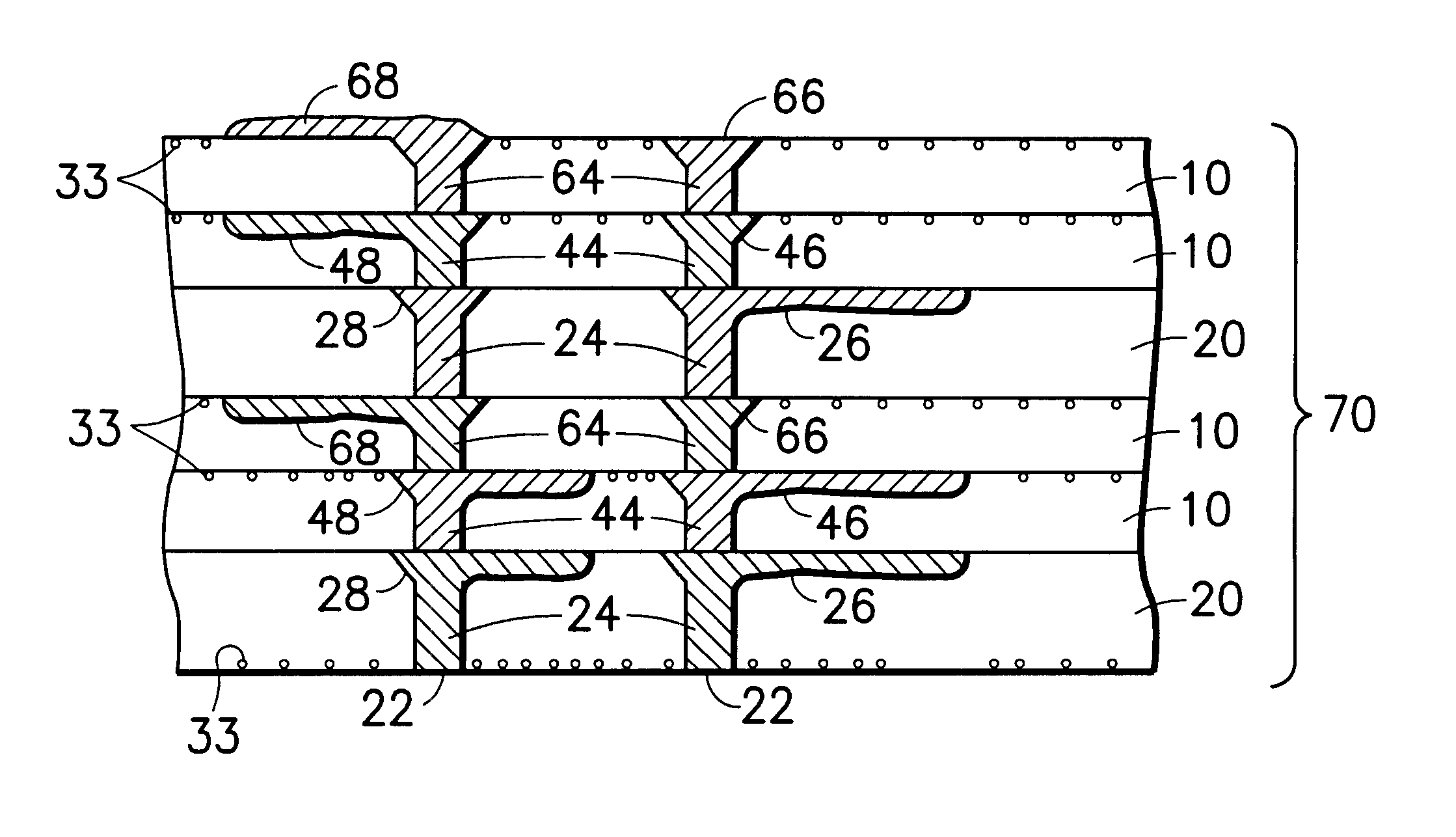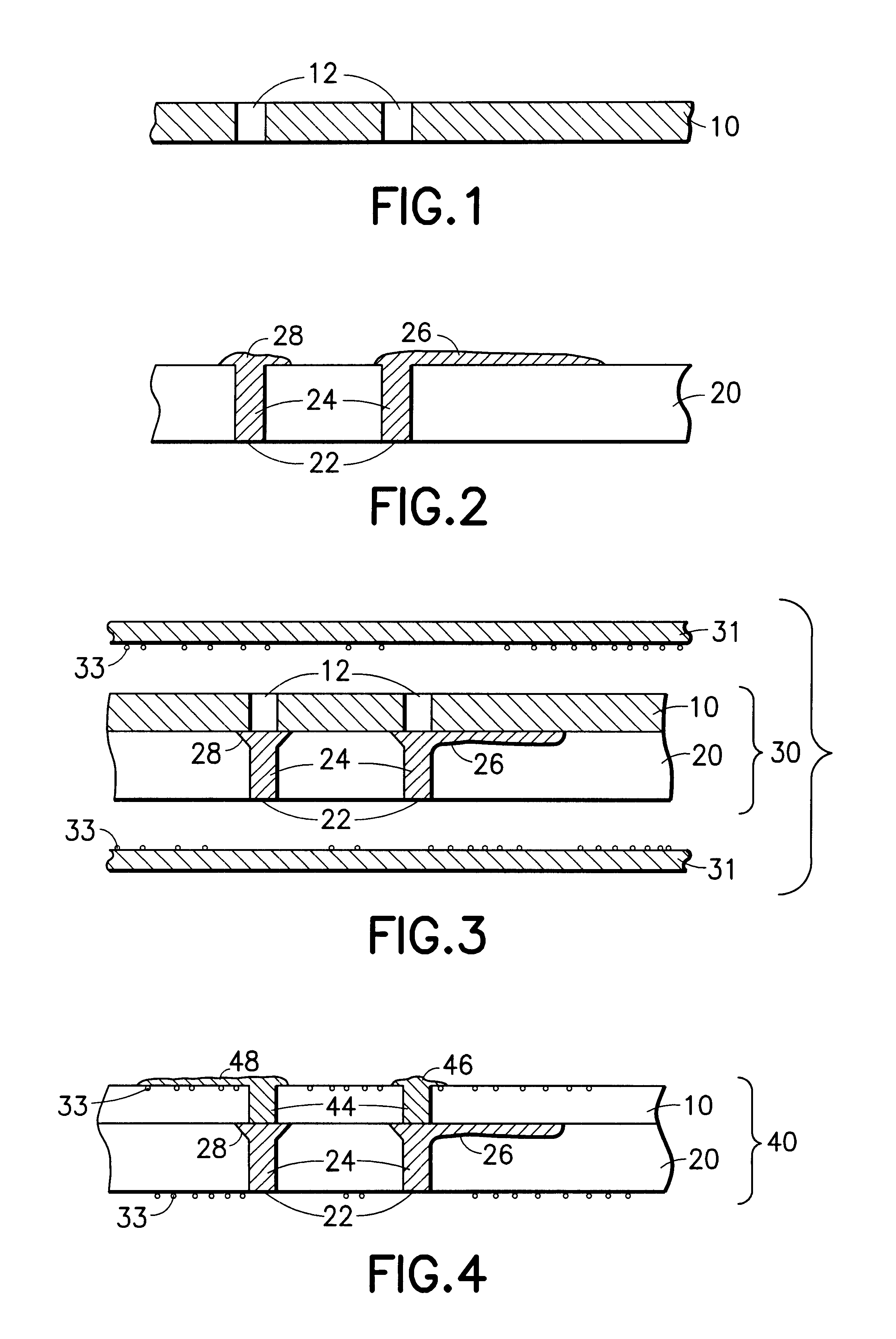Multi-thickness, multi-layer green sheet lamination and method thereof
- Summary
- Abstract
- Description
- Claims
- Application Information
AI Technical Summary
Benefits of technology
Problems solved by technology
Method used
Image
Examples
example 1
Several samples of multi-layer ceramic sub-structures containing thin green sheets 10, of thicknesses varying from about 0.8 mils to about 6.0 mils, were built on thick ceramic green sheets 20, of various thicknesses ranging from about 6 mils to about 20 mils, using the method of this invention and which resulted in a structure 30, as shown in FIG. 3. The material for the ceramic green sheets 10 and 20, included alumina and glass ceramic. While the electrically conductive material included molybdenum, copper and other well-known composites. The sub-structures 30, were built at various pressures up to about 800 psi and with temperatures of up to about 90.degree. C. and by using an adhesion barrier material 33. In all cases the sub-structures were measured for radial error. The radial errors were found to be less than about 1.2 mils, which showed a good layer to layer contact and alignment.
example 2
Several single thin ceramic green sheets 10, with thicknesses ranging from about 0.8 mils to about 3.0 mils were punched and screened as a free standing sheet 10. The material set for the green sheet 10, included alumina and glass ceramic and the electrically conductive material, such as, the metal paste, included molybdenum, copper and other composites. In all cases the free standing screened thin ceramic layers 10, were measured for radial errors. The measured radial errors in all cases was more than about 1.2 mils and ranged up to about 15.0 mils. It was also noticed that the freestanding screened thin layers 10, were all wrinkled and non-usable.
example 3
Several samples of multi-layer ceramic sub-structures containing thin ceramic green sheets 10, of thicknesses varying from about 0.8 mils to about 6.0 mils were built with wiring density of about 3 mils on about 7 mil pitch using the method of this invention and the structures of FIG. 3, on thick green sheets 20, of various thicknesses ranging from about 6 mils to about 8 mils. The materials for the ceramic green sheets 10 and 20, included alumina and glass ceramic. The electrically conductive material included molybdenum, copper and composites. The sub-structures were built at various pressures up to about 800 psi and with temperatures up to about 90.degree. C. and by using the adhesion barrier materials 33. In all cases the sub-structures were measured for radial error. It was found that the radial errors were less than about 1.2 mils, which meant a good layer to layer contact and alignment. Also the substructures separated from the plates 31, with no damage to ceramic body or the...
PUM
| Property | Measurement | Unit |
|---|---|---|
| thickness | aaaaa | aaaaa |
| thickness | aaaaa | aaaaa |
| thickness | aaaaa | aaaaa |
Abstract
Description
Claims
Application Information
 Login to View More
Login to View More - R&D
- Intellectual Property
- Life Sciences
- Materials
- Tech Scout
- Unparalleled Data Quality
- Higher Quality Content
- 60% Fewer Hallucinations
Browse by: Latest US Patents, China's latest patents, Technical Efficacy Thesaurus, Application Domain, Technology Topic, Popular Technical Reports.
© 2025 PatSnap. All rights reserved.Legal|Privacy policy|Modern Slavery Act Transparency Statement|Sitemap|About US| Contact US: help@patsnap.com



